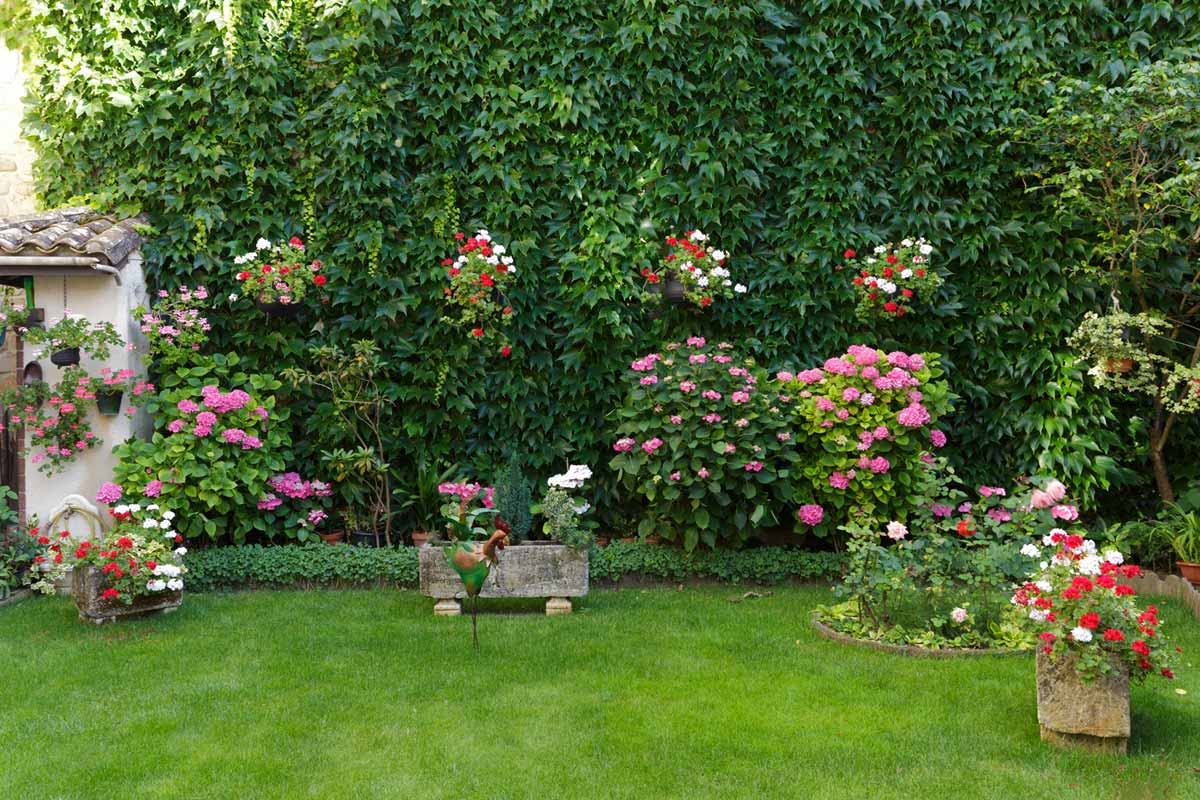Best Companion Plants For Barberries
Best Companion Plants for Barberries
Barberries are a versatile shrub that can be used in a variety of ways in the landscape. They come in a wide range of colors, from bright yellow to deep purple, and their thorny branches make them a good choice for deterring pests and animals. Barberries also offer beautiful fall foliage, making them a valuable addition to any garden.
When choosing companion plants for barberries, it is important to consider the following factors:
- Sunlight: Barberries prefer full sun, so you will want to choose companion plants that also thrive in these conditions.
- Water needs: Barberries are relatively drought-tolerant, but they will appreciate regular watering during the hot summer months.
- Soil type: Barberries are not picky about soil type, but they do best in well-drained soil.
- Height and spread: Barberries can grow up to 6 feet tall and wide, so you will need to choose companion plants that are a similar size or that will not outgrow the barberry.
- Color: Barberries come in a variety of colors, so you can choose companion plants that complement or contrast their foliage.
Here are some of the best companion plants for barberries:
- Ornamental grasses: Ornamental grasses add height and movement to the garden, and they can provide a striking contrast to the barberry's leaves. Some good options include miscanthus, fountain grass, and switchgrass.
- Perennials: Perennials offer long-lasting blooms and foliage, and they can help to fill in the spaces around the barberry. Some good options include daylilies, coneflowers, and geraniums.
- Vines: Vines can be used to add vertical interest to the garden, and they can also help to cover up unsightly areas. Some good options include clematis, honeysuckle, and trumpet vine.
- Shrubs: Shrubs can provide additional structure and height to the garden, and they can also help to extend the bloom time of the barberry. Some good options include hydrangeas, viburnums, and holly.
- Evergreens: Evergreens offer year-round interest, and they can help to add depth and contrast to the garden. Some good options include boxwood, holly, and juniper.
When choosing companion plants for barberries, it is important to experiment and see what works best in your garden. By considering the factors above, you can create a beautiful and harmonious landscape that will thrive for years to come.
Barberry shrubs are a versatile addition to any garden, but they can be even more stunning when planted with companion plants. The right companion plants can help to bring out the best in barberries, while also providing benefits such as pest control, erosion control, and increased pollinator activity.
Some of the best companion plants for barberries include:
- Ornamental grasses: Ornamental grasses provide vertical interest and help to soften the edges of barberry shrubs. They also help to improve drainage and reduce soil compaction. Some good options for ornamental grasses include miscanthus, switchgrass, and fountain grass.
- Evergreens: Evergreens provide year-round interest and can help to screen out unsightly views. They also help to provide windbreaks and can help to reduce noise pollution. Some good options for evergreens include junipers, yews, and pines.
- Perennials: Perennials add color and interest to the garden throughout the growing season. They also help to attract pollinators and other beneficial insects. Some good options for perennials include daylilies, coneflowers, and rudbeckias.
- Annuals: Annuals add a splash of color to the garden for a single season. They are also a good option for gardeners who want to try new plants without having to commit to a long-term investment. Some good options for annuals include marigolds, petunias, and geraniums.
If you are looking for more information about barberry companion plants, I recommend visiting Gardenia Inspiration. This website has a comprehensive list of companion plants for barberries, as well as tips on how to choose the right plants for your specific needs.
FAQ of barberry companion plants
Question 1: What are some good companion plants for barberries?
Answer: Barberries can be paired with a variety of other plants, but some of the best companion plants include:
- Sedums: These drought-tolerant plants have similar growing requirements to barberries and can help to add color and texture to your landscape.
- Junipers: These evergreen shrubs can provide year-round interest and contrast well with the barberry's bright foliage.

- Ornamental grasses: These tall, swaying grasses can add movement and height to your garden, and they can also help to deter pests.

- Yuccas: These spiky succulents are heat- and drought-tolerant, and they can add a touch of the desert to your garden.

- Other shrubs: Barberries can also be planted alongside other shrubs, such as hydrangeas, roses, or lilacs. When choosing companion shrubs, it is important to consider the size and mature height of the plants, as well as their sunlight and water requirements.
Question 2: What are the benefits of planting companion plants with barberries?
Answer: There are several benefits to planting companion plants with barberries. For example, companion plants can:
- Help to deter pests and diseases: Some companion plants, such as yuccas and ornamental grasses, have strong scents that can repel pests. Other companion plants, such as sedums and junipers, can help to attract beneficial insects, such as ladybugs and lacewings, which can help to control pests.

- Improve soil quality: Some companion plants, such as legumes, can fix nitrogen in the soil, which can help to improve the nutrient content of the soil and make it more beneficial for barberries.

- Provide structure and interest: Companion plants can help to add structure and interest to your landscape. For example, tall shrubs can provide a backdrop for barberries, while shorter shrubs and flowers can add color and texture.
- Extend the bloom time: Some companion plants, such as roses and lilacs, can bloom at different times of the year than barberries. This can help to extend the bloom time of your garden and provide interest throughout the growing season.
Question 3: How far apart should barberry companion plants be planted?
Answer: The distance at which barberry companion plants should be planted will vary depending on the size of the plants. In general, however, it is a good idea to plant companion plants at least 2-3 feet apart. This will give the plants enough room to grow and spread without crowding each other.
Question 4: What are some tips for choosing companion plants for barberries?
Answer: When choosing companion plants for barberries, it is important to consider the following factors:
- Sunlight requirements: Barberries need full sun to partial shade. Make sure to choose companion plants that have similar sunlight requirements.
- Water requirements: Barberries are drought-tolerant, but they do need regular watering during the first year after planting. Choose companion plants that have similar water requirements.
- Soil type: Barberries prefer well-drained soil. Make sure to choose companion plants that can tolerate the same soil type.
- Size: Barberries can grow up to 6 feet tall and wide. Make sure to choose companion plants that are not too large or too small for your space.
- Color and texture: Consider the color and texture of your barberries when choosing companion plants. You may want to choose companion plants that have complementary colors or textures, or you may want to choose companion plants that create a contrast.
Question 5: What are some common mistakes to avoid when planting barberry companion plants?
Answer: Some common mistakes to avoid when planting barberry companion plants include:
- Planting companion plants too close together. This can lead to overcrowding and competition for resources.
- Planting companion plants with different sunlight or water requirements. This can lead to stress and even death of the plants.
- Planting companion plants that are not compatible with each other. Some plants can release chemicals that are harmful to other plants.
- Not considering the size of the mature plants. Some plants can grow very large, and it is important to make sure that you have enough space for them.
Image of barberry companion plants
- Boxwood: This evergreen shrub has small, dark, glossy green leaves that contrasts nicely with the barberry's thorny, red leaves.

- Geranium: Geraniums come in a variety of colors, such as red, pink or white flowers. They can add a pop of color to the garden and help to attract pollinators.

- Sedum: Sedums are drought-tolerant succulents that come in a variety of shapes and sizes. They can add texture and interest to the garden and help to prevent erosion.
- Juniper: Junipers are evergreen shrubs or trees that come in a variety of sizes and colors. They can provide year-round interest in the garden and help to screen out unwanted views.

- Ornamental grasses: Ornamental grasses add movement and texture to the garden. They can also help to attract pollinators.

Post a Comment for " Best Companion Plants For Barberries"